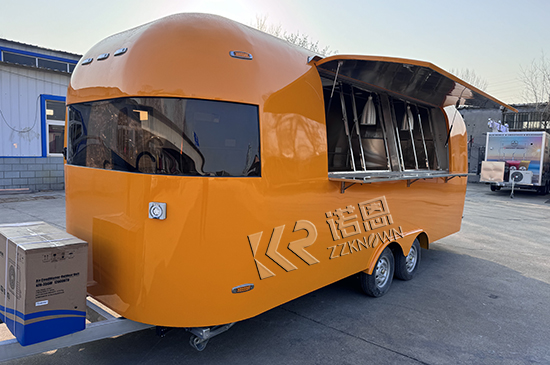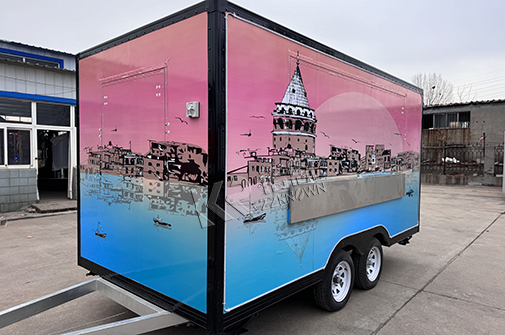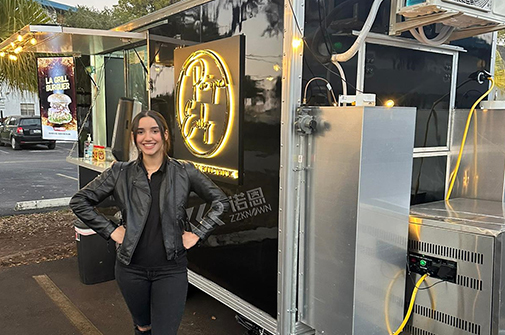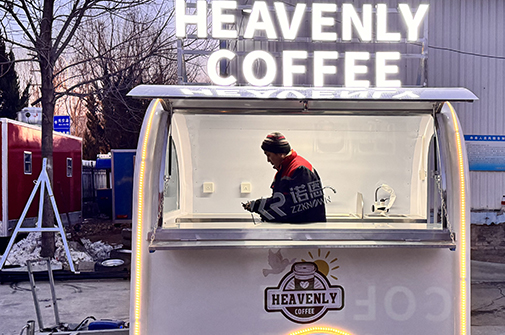Converting a horse trailer into a food truck is a fantastic way to repurpose an existing structure into a functional mobile kitchen. Horse trailers typically have a solid base, durable construction, and ample space for conversion. Here’s a step-by-step guide on how to convert a horse trailer into a food truck:
1. Planning and Preparation
Before diving into the conversion process, it’s important to plan carefully to ensure that the layout will accommodate your kitchen equipment and meet health and safety standards.
Key Considerations:
- Dimensions: Measure the internal dimensions of the trailer to determine the available space for equipment, storage, and work areas.
- Kitchen Requirements: List the essential equipment you'll need, such as refrigerators, grills, fryers, sinks, food prep areas, and a point-of-sale system.
- Electrical and Plumbing: Ensure you have a reliable power supply and a working water system (for sinks, cleaning, and refrigeration).
- Permits and Regulations: Research local food truck regulations, including food safety, health codes, and licensing. Some areas may require specific certifications for food trucks, so make sure to comply with all rules.
2. Insulation and Ventilation
Horse trailers are designed to hold livestock, which means they may not have the necessary insulation or ventilation to support food safety and comfort.
Steps:
- Insulate: Apply foam board or fiberglass insulation to the walls and ceiling. This will help keep the temperature inside stable, whether you're in the heat of summer or the cold of winter.
- Ventilation: Install roof vents and exhaust fans to ensure proper air circulation. This is especially important if you’re using cooking equipment that generates a lot of heat, such as fryers or grills.
3. Flooring
The original flooring of the horse trailer is likely to be rugged and may not be suitable for food preparation areas. Replace it with durable, non-slip flooring that is easy to clean and maintain.
Recommendations:
- Vinyl Flooring: A popular option for food trucks because it's easy to clean, waterproof, and durable.
- Rubber Flooring: Provides slip resistance, which is essential in a busy food truck environment.
Make sure to choose materials that are resistant to grease, oil, and water, ensuring the kitchen stays hygienic.
4. Install the Kitchen Equipment
Now it’s time to install the equipment. The layout will depend on your menu and business model, but there are key pieces of equipment most food trucks need.
Essential Kitchen Equipment:
- Cooking Equipment: Install grills, fryers, ovens, or stovetops depending on your menu.
- Sinks: At least one three-compartment sink for washing, rinsing, and sanitizing, and a handwashing sink for compliance with health codes.
- Refrigeration: A refrigerator, freezer, and/or cooler to store ingredients. Depending on your needs, you can opt for under-counter models to save space.
- Storage and Prep Areas: Install stainless steel work tables for food preparation and shelving for storing ingredients, cooking utensils, and supplies.
- Electrical: Ensure you have an adequate power system to support your equipment. If your trailer is not already equipped, you will need to install wiring and possibly a generator for power supply.
Pro Tip: Keep in mind the layout should be efficient and ergonomic, allowing staff to work quickly and comfortably. A common setup includes cooking on one side, storage on the other, and a service window in the middle.
5. Plumbing and Water System
A functional water system is essential for a food truck. You will need both hot and cold water for sinks, cleaning, and cooking.
Installation Steps:
- Water Tanks: Install a fresh water tank and a waste water tank. The sizes of these tanks depend on your local regulations and the size of your trailer, but a common capacity for each is 30-50 gallons.
- Water Heater: A small, efficient water heater will provide hot water for your sinks and cleaning needs.
- Piping: Ensure that plumbing pipes are installed securely and are able to withstand movement while the trailer is in transit.
6. Electrical System
A reliable electrical system is crucial for running all your kitchen equipment.
Installation Tips:
- Power Source: Depending on the size of your kitchen and location, you may need an onboard generator or an external power hookup.
- Wiring: Hire a licensed electrician to install wiring, outlets, and circuits that can handle the voltage needs of your equipment.
- Lighting: Install LED lights for visibility inside the trailer and around the serving window. This not only improves visibility but also enhances the customer experience.
7. Serving Window and Exterior Design
Once the kitchen is set up, the next step is to create a functional serving area for customers.
Serving Window:
- Size: Make sure the window is large enough for easy communication with customers and to serve food quickly.
- Shelves: Consider adding counter space below the window for handing out food and drinks or displaying menu items.
Exterior Design:
- Branding: Paint the exterior of the trailer to match your brand identity. You can also add your business name, logo, and contact information for marketing purposes.
- Signage: Make your trailer stand out with attractive signage that catches the attention of passersby.
8. Final Checks and Compliance
Before you start serving food, you need to ensure everything is up to code.
Checklist:
- Health and Safety Inspections: Schedule a health inspection to make sure your food truck complies with local regulations.
- DOT Certification: If you’re planning to drive your converted horse trailer on public roads, you may need to ensure the trailer is roadworthy and complies with Department of Transportation (DOT) standards.
- Fire Safety: Install a fire suppression system above cooking equipment and ensure your truck has fire extinguishers in accessible locations.
9. Test Run
Once everything is installed, conduct a test run to ensure that all systems work as expected. Test the cooking equipment, plumbing, refrigeration, and electrical systems to make sure everything functions properly before you start operating regularly.
Conclusion
Converting a horse trailer into a food truck is a practical and cost-effective way to start a mobile food business. With proper planning, the right equipment, and attention to detail, you can create a functional, efficient, and branded food truck that serves delicious meals to customers wherever you go. Whether you're serving hot meals or refreshing drinks, a custom food truck can be a fantastic investment for your business.




